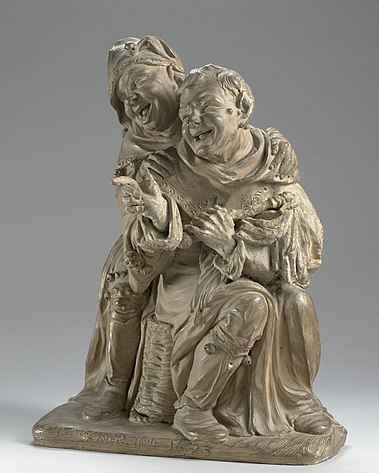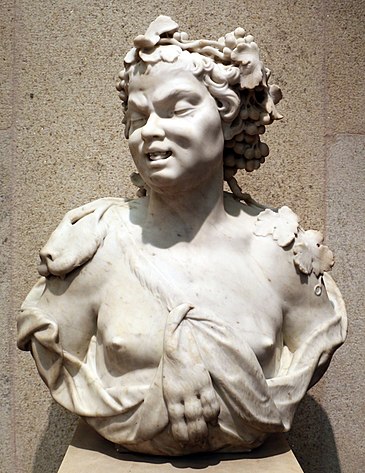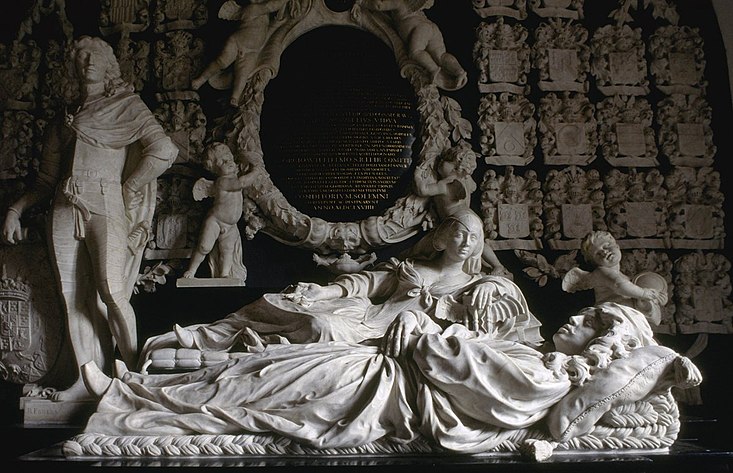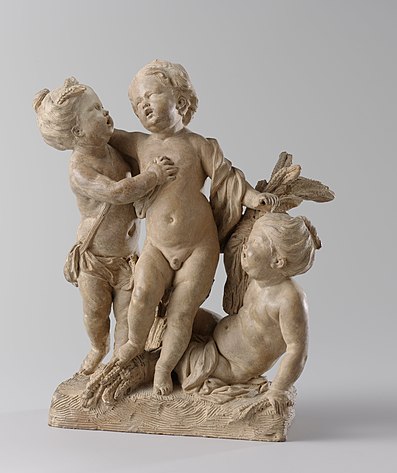After breaking sway from Spain, the predominantly Calvinist Dutch Republic produced one sculptor of international repute, Hendrick de Keyser (1565–1621). He also was the chief architect of Amsterdam, and creator of major churches and monuments. His most famous work of sculpture is the tomb of William the Silent (1614–1622) in the Nieuwe Kerk in Delft. The tomb was sculpted of marble, originally black but now white, with bronze statues representing William the Silent, Glory at his feet, and the four Cardinal Virtues at the corners. Since the church was Calvinist, the female figures of the Cardinal Virtues were completely clothed from head to foot.[23]
Pupils and assistants of the Flemish sculptor Artus Quellinus the Elder who from 1650 onwards worked for fifteen years on the new city hall in Amsterdam played an important role in the spread of Baroque sculpture in the Dutch Republic. Now called the Royal Palace on the Dam, this construction project, and in particular the marble decorations he and his workshop produced, became an example for other buildings in Amsterdam. The many Flemish sculptors who joined Quellinus to work on this project had an important influence on Dutch Baroque sculpture. They include Rombout Verhulst who became the leading sculptor of marble monuments, including funerary monuments, garden figures and portraits.[24]
Other Flemish sculptors who contributed to the Baroque sculpture in the Dutch Republic were Jan Claudius de Cock, Jan Baptist Xavery, Pieter Xavery, Bartholomeus Eggers and Francis van Bossuit. Some of them trained local sculptors. For instance the Dutch sculptor Johannes Ebbelaer (c. 1666-1706) likely received training from Rombout Verhulst, Pieter Xavery and Francis van Bossuit.[25] Van Bossuit is believed to have also been the master of Ignatius van Logteren.[26] Van Logteren and his son Jan van Logteren left an important mark on the entire 18th century Amsterdam facade architecture and decoration. Their work forms the last summit of the late Baroque and the first Rococo style in sculpture in the Dutch Republic。

Post time: Aug-18-2022



